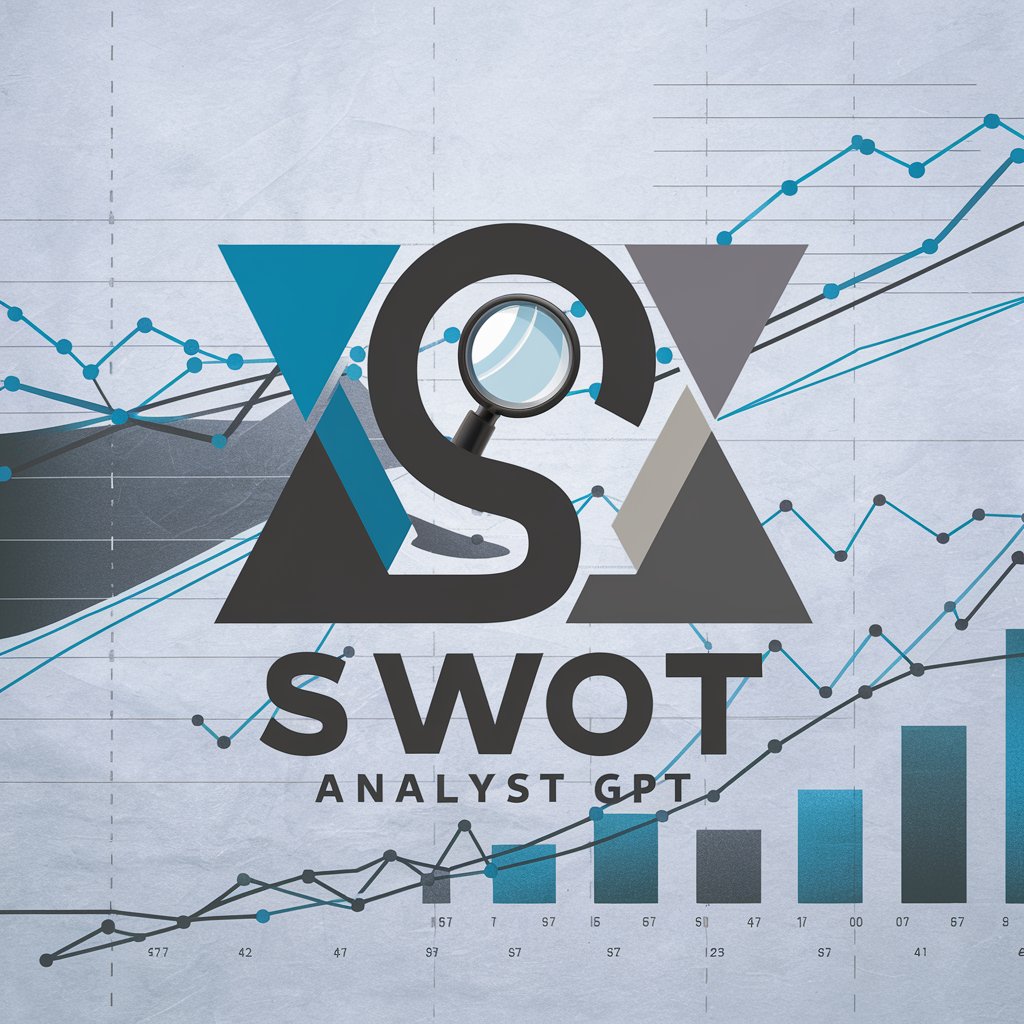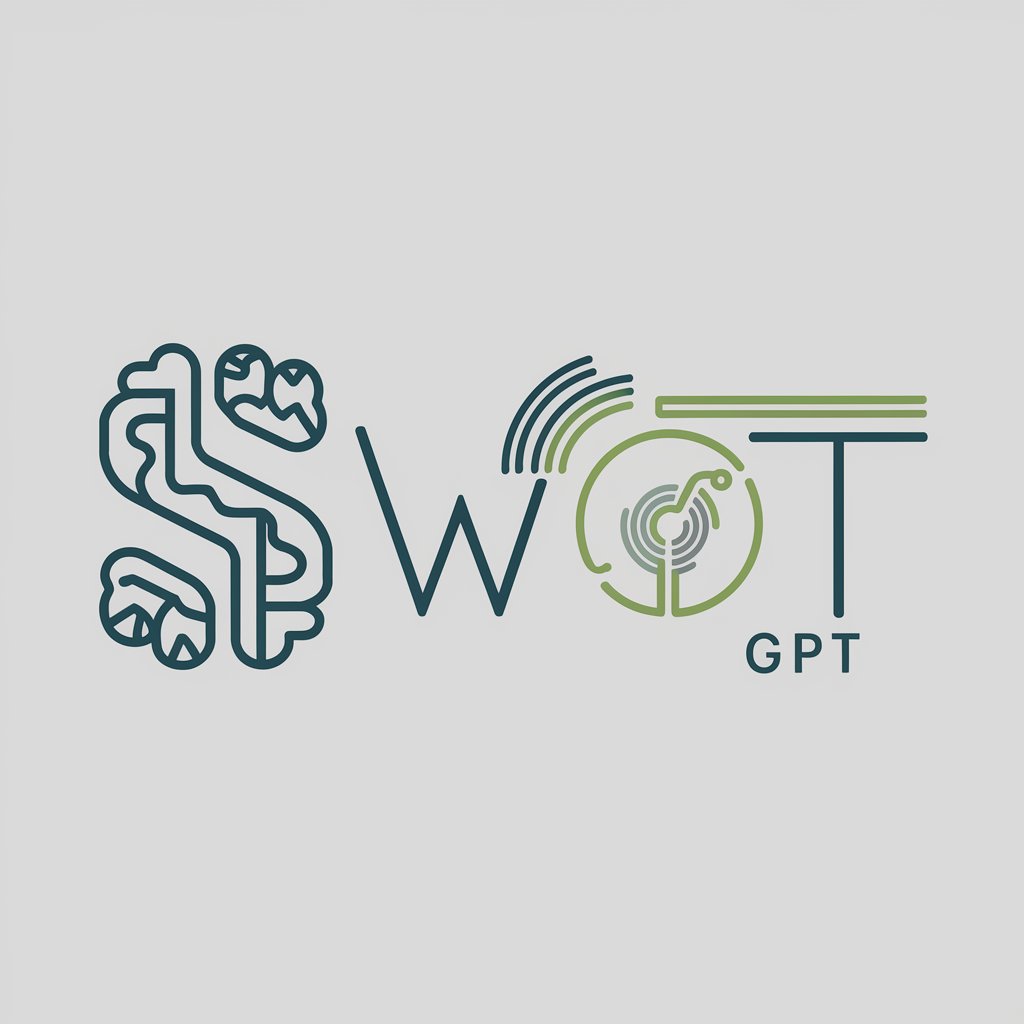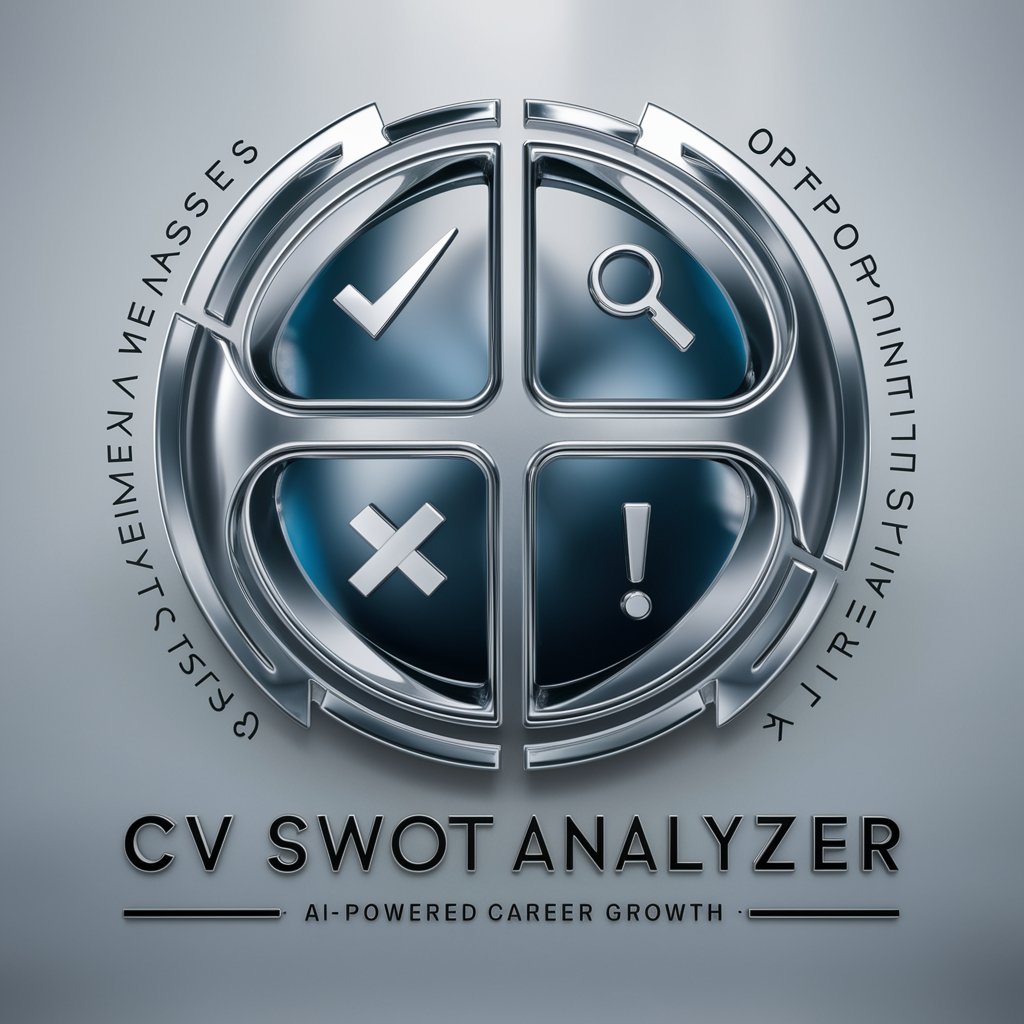
SWOT分析 - SWOT Analysis Tool
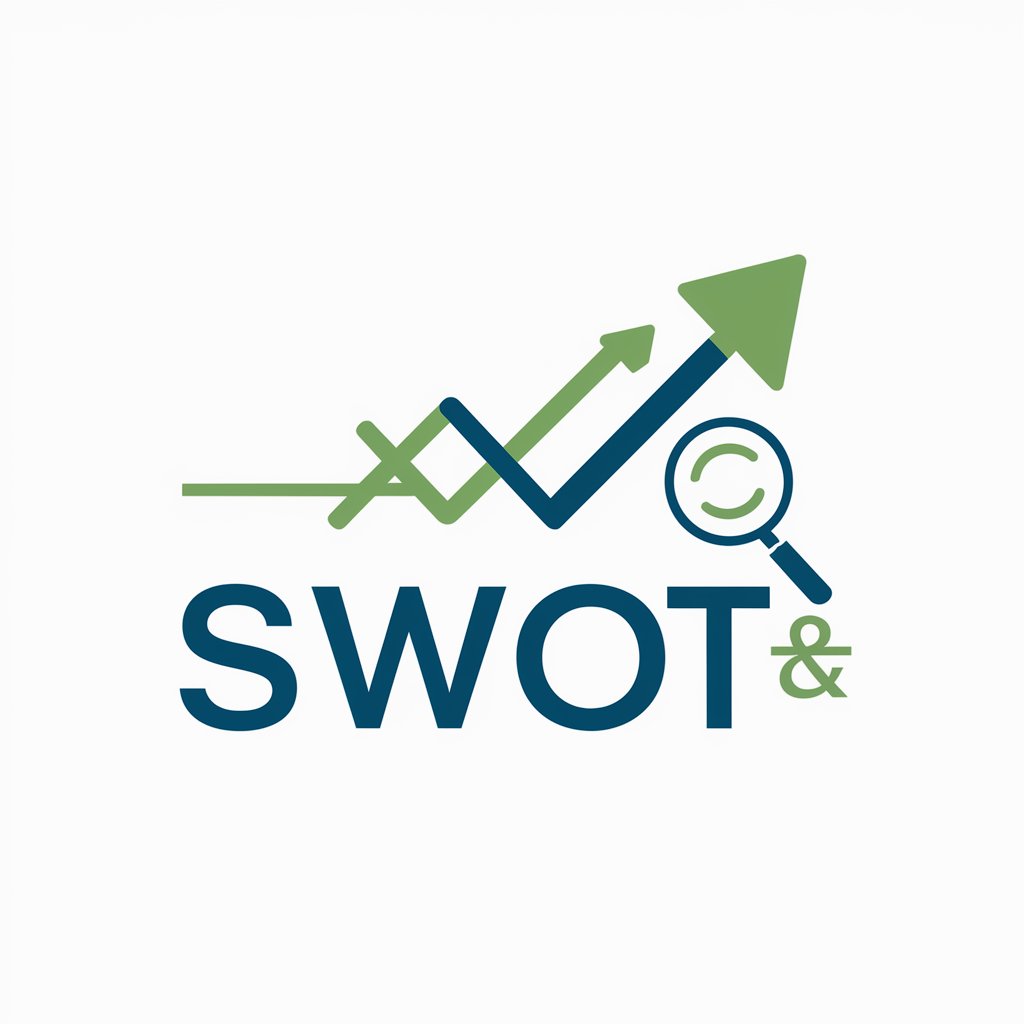
Welcome! Let's optimize your brand strategy with a detailed SWOT analysis.
Strategize with AI-powered SWOT Analysis
Analyze the strengths and weaknesses of our new marketing campaign...
What are the opportunities and threats for entering the new market segment...
Provide a SWOT analysis for our latest product launch...
Conduct a cross SWOT analysis for our primary and secondary target audiences...
Get Embed Code
Introduction to SWOT Analysis
SWOT Analysis, an acronym for Strengths, Weaknesses, Opportunities, and Threats, is a strategic planning tool used to evaluate these four elements of a project, business venture, or in a broader sense, any situation facing an organization. The primary purpose of SWOT analysis is to help organizations identify strategies for achieving their objectives by leveraging strengths, addressing weaknesses, capitalizing on opportunities, and mitigating threats. For instance, a startup might use SWOT to assess its innovative technology (strength), lack of brand recognition (weakness), a growing demand for sustainable products (opportunity), and intense competition (threat). This analysis fosters a comprehensive understanding of both internal and external factors crucial for strategic planning and decision-making. Powered by ChatGPT-4o。

Main Functions of SWOT Analysis
Strategic Planning
Example
Determining the strategic direction for a company by assessing its internal capabilities and external market conditions.
Scenario
A tech company uses SWOT to explore new markets by evaluating its strong R&D capabilities (strength) against the challenge of regulatory barriers (weakness), in the context of an emerging technology trend (opportunity) and the threat of new entrants.
Marketing Strategy
Example
Developing marketing strategies by understanding the company's unique selling propositions and external competitive landscape.
Scenario
A fashion retailer applies SWOT to enhance its online presence, leveraging its extensive online catalogue (strength), addressing the issue of high return rates (weakness), seizing the trend towards online shopping (opportunity), and countering the threat of digital marketing campaigns from competitors.
Product Development
Example
Guiding product development priorities and directions based on internal capabilities and market needs.
Scenario
A food and beverage company uses SWOT to identify the potential for a new health drink, considering its strong distribution network (strength), current lack of presence in the health segment (weakness), rising consumer health consciousness (opportunity), and the prevalence of established health drink brands (threat).
Risk Management
Example
Identifying and mitigating potential threats to the organization or project.
Scenario
An IT firm employs SWOT to assess the risks associated with data security, highlighting its strong encryption protocols (strength), the need for regular staff training on security (weakness), the opportunity presented by increasing demand for secure data solutions, and the threat posed by sophisticated cyber-attacks.
Ideal Users of SWOT Analysis Services
Business Executives and Managers
These professionals utilize SWOT Analysis to make informed strategic decisions, manage risks, and identify growth opportunities. The analysis helps them align business operations with strategic objectives, ensuring competitive advantage and market relevance.
Marketing Professionals
Marketers use SWOT to craft strategies that effectively position their brand, products, and services in the market. It enables them to understand and leverage their strengths in creative campaigns, address any branding weaknesses, exploit market opportunities, and counteract competitive threats.
Entrepreneurs and Startups
For new ventures, SWOT Analysis is vital for validating business models, exploring market entry strategies, and attracting investment. It offers a structured way to analyze and present the venture's potential by highlighting strengths, addressing startup weaknesses, seizing market opportunities, and preparing for external threats.
Non-Profit Organizations
Non-profits can apply SWOT to enhance their impact, optimize resource allocation, and strategize fundraising activities. The analysis aids in navigating the challenges of limited resources (weakness), leveraging community support (strength), tapping into new donor segments (opportunity), and dealing with regulatory changes (threat).

How to Use SWOT Analysis
1
Begin by visiting yeschat.ai for a complimentary trial, which requires no sign-up or ChatGPT Plus subscription.
2
Identify the subject of your SWOT analysis. This could be a business, a product, a project, or even personal career planning.
3
Gather relevant data and insights. This includes internal resources like financial statements or project reports, and external sources such as market research or competitor analysis.
4
Fill in the SWOT matrix with your findings: Strengths and Weaknesses (internal factors) at the top, Opportunities and Threats (external factors) at the bottom.
5
Analyze the matrix to devise strategies. Utilize strengths to capture opportunities, address weaknesses, fend off threats, and consider how strengths can mitigate weaknesses and threats.
Try other advanced and practical GPTs
Luis Andreu Ads Expert
Optimize your ads with AI-driven insights

Y Ads Expert
Optimize your Yelp Ads with AI-powered expertise.

Insta Ads Expert
AI-powered Instagram ad creativity at your fingertips.

Cognitive Coders
Harness AI to Explore Technical Solutions

codeJS
Empowering code execution with AI

NodeJS Navigator
Elevate Your NodeJS Skills with AI
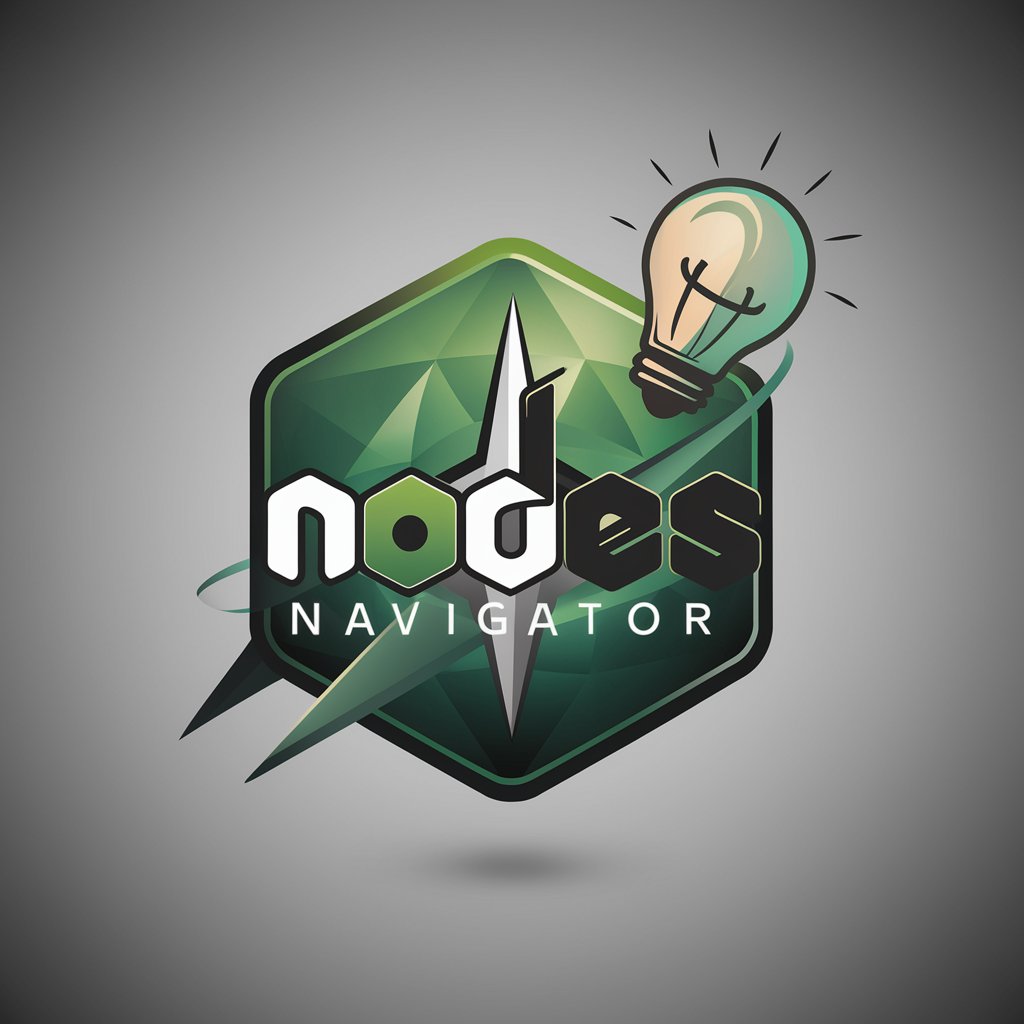
Oracle Code Assistant
AI-Powered Oracle Coding Companion

Oracle developer expert
Empower Your Database with AI

Oracle TA
Elevate Your Oracle Skills with AI

PL/SQL APEX Assistant
AI-powered Oracle APEX & PL/SQL support

Desarrollador Oracle APEX
Empowering Oracle APEX Development with AI

Oracle APEX and Docker Expert
Unleash the power of AI-driven Oracle APEX and Docker integration

FAQs on SWOT Analysis
What is SWOT Analysis?
SWOT Analysis is a strategic planning tool used to identify and understand the Strengths, Weaknesses, Opportunities, and Threats related to business competition or project planning.
Can SWOT Analysis be used for personal development?
Yes, individuals can use SWOT Analysis to assess their personal strengths and weaknesses, identify opportunities for growth, and recognize potential threats to their personal development or career progression.
How often should a business conduct a SWOT Analysis?
Businesses should perform SWOT Analysis periodically, especially when facing significant market changes, before launching new products, or when strategic planning.
Are there limitations to SWOT Analysis?
Yes, the main limitations include its subjective nature, the potential for overlooking external factors, and the risk of generating overly broad or non-actionable insights.
How can SWOT Analysis influence decision-making?
SWOT Analysis helps organizations make informed decisions by clearly laying out all internal and external factors that could impact their objectives, thereby facilitating strategic planning and risk management.

